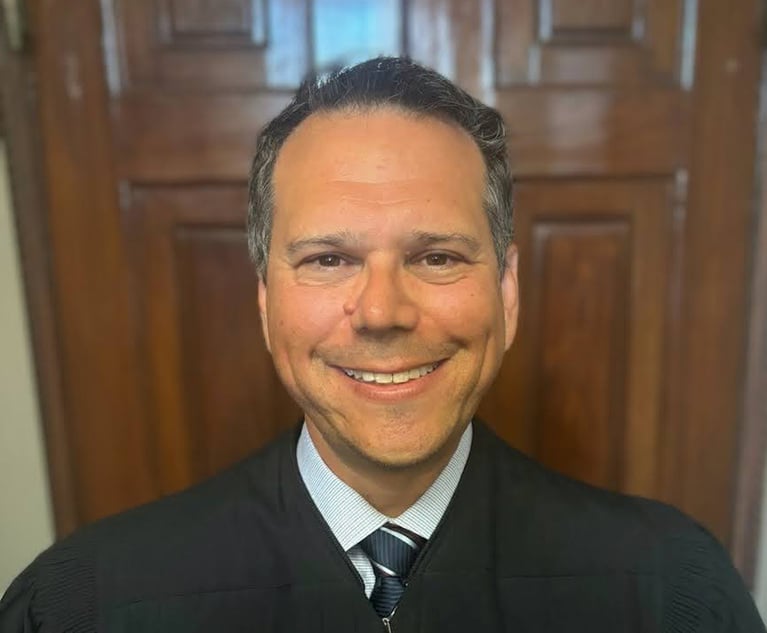 David Schifrin, left, and Melissa Baney, right, of Hollingsworth. Courtesy photos
David Schifrin, left, and Melissa Baney, right, of Hollingsworth. Courtesy photos Litigating Pesticide Bans and Restrictions for Defendants
David Schifrin and Melissa Baney of Hollingsworth write that introducing evidence of bans or restrictions risks creating unfair prejudice, confusing the jury and wasting time.
September 30, 2024 at 07:30 AM
7 minute read
In the United States, pesticide safety labeling is determined at the federal level. However, the distribution, sale and use of pesticides takes place within a multi-tiered regulatory framework in which a pesticide approved at the federal level may be subject to stricter use conditions imposed by state and local jurisdictions, which are often first to ban or restrict the sale or use of a pesticide when any question of product safety is raised, regardless of merit. The number of state and local jurisdictions capable of enacting some form of restriction on the use of a pesticide creates a minefield for litigants who must deal with the specter that restrictions not based on the scientific determinations of the agencies tasked with evaluating their products will nevertheless be put forward as affirmative evidence that those products are unsafe.
The appropriate litigation strategy for dealing with evidence of bans or restrictions depends first and foremost on how the evidence is being used. Evidence of bans or restrictions at the state and local level may be used to undermine conclusions at the federal level, creating misimpressions about the degree to which governmental entities agree about a product's safety. Parties and their experts also may seek to rely on the fact that a governmental entity has banned or restricted the use of a product as evidence that the product causes the alleged harm despite the different standards that apply to regulatory or political bans and restrictions and the burden of proof for causation in tort litigation.
NOT FOR REPRINT
© 2025 ALM Global, LLC, All Rights Reserved. Request academic re-use from www.copyright.com. All other uses, submit a request to [email protected]. For more information visit Asset & Logo Licensing.
You Might Like
View All
Litigators of the Week: 3 Former SGs Team Up In a Major Opioid Win for Pharmacies at the Ohio Supreme Court

Litigators of the Week: After Two Big Wins for Plaintiffs, a Defense Verdict for Infant Formula Makers


Litigators of the Week: A Defense Verdict in Cook County in the First Zantac Trial
Law Firms Mentioned
Trending Stories
- 1Uber Files RICO Suit Against Plaintiff-Side Firms Alleging Fraudulent Injury Claims
- 2The Law Firm Disrupted: Scrutinizing the Elephant More Than the Mouse
- 3Inherent Diminished Value Damages Unavailable to 3rd-Party Claimants, Court Says
- 4Pa. Defense Firm Sued by Client Over Ex-Eagles Player's $43.5M Med Mal Win
- 5Losses Mount at Morris Manning, but Departing Ex-Chair Stays Bullish About His Old Firm's Future
Who Got The Work
J. Brugh Lower of Gibbons has entered an appearance for industrial equipment supplier Devco Corporation in a pending trademark infringement lawsuit. The suit, accusing the defendant of selling knock-off Graco products, was filed Dec. 18 in New Jersey District Court by Rivkin Radler on behalf of Graco Inc. and Graco Minnesota. The case, assigned to U.S. District Judge Zahid N. Quraishi, is 3:24-cv-11294, Graco Inc. et al v. Devco Corporation.
Who Got The Work
Rebecca Maller-Stein and Kent A. Yalowitz of Arnold & Porter Kaye Scholer have entered their appearances for Hanaco Venture Capital and its executives, Lior Prosor and David Frankel, in a pending securities lawsuit. The action, filed on Dec. 24 in New York Southern District Court by Zell, Aron & Co. on behalf of Goldeneye Advisors, accuses the defendants of negligently and fraudulently managing the plaintiff's $1 million investment. The case, assigned to U.S. District Judge Vernon S. Broderick, is 1:24-cv-09918, Goldeneye Advisors, LLC v. Hanaco Venture Capital, Ltd. et al.
Who Got The Work
Attorneys from A&O Shearman has stepped in as defense counsel for Toronto-Dominion Bank and other defendants in a pending securities class action. The suit, filed Dec. 11 in New York Southern District Court by Bleichmar Fonti & Auld, accuses the defendants of concealing the bank's 'pervasive' deficiencies in regards to its compliance with the Bank Secrecy Act and the quality of its anti-money laundering controls. The case, assigned to U.S. District Judge Arun Subramanian, is 1:24-cv-09445, Gonzalez v. The Toronto-Dominion Bank et al.
Who Got The Work
Crown Castle International, a Pennsylvania company providing shared communications infrastructure, has turned to Luke D. Wolf of Gordon Rees Scully Mansukhani to fend off a pending breach-of-contract lawsuit. The court action, filed Nov. 25 in Michigan Eastern District Court by Hooper Hathaway PC on behalf of The Town Residences LLC, accuses Crown Castle of failing to transfer approximately $30,000 in utility payments from T-Mobile in breach of a roof-top lease and assignment agreement. The case, assigned to U.S. District Judge Susan K. Declercq, is 2:24-cv-13131, The Town Residences LLC v. T-Mobile US, Inc. et al.
Who Got The Work
Wilfred P. Coronato and Daniel M. Schwartz of McCarter & English have stepped in as defense counsel to Electrolux Home Products Inc. in a pending product liability lawsuit. The court action, filed Nov. 26 in New York Eastern District Court by Poulos Lopiccolo PC and Nagel Rice LLP on behalf of David Stern, alleges that the defendant's refrigerators’ drawers and shelving repeatedly break and fall apart within months after purchase. The case, assigned to U.S. District Judge Joan M. Azrack, is 2:24-cv-08204, Stern v. Electrolux Home Products, Inc.
Featured Firms
Law Offices of Gary Martin Hays & Associates, P.C.
(470) 294-1674
Law Offices of Mark E. Salomone
(857) 444-6468
Smith & Hassler
(713) 739-1250






